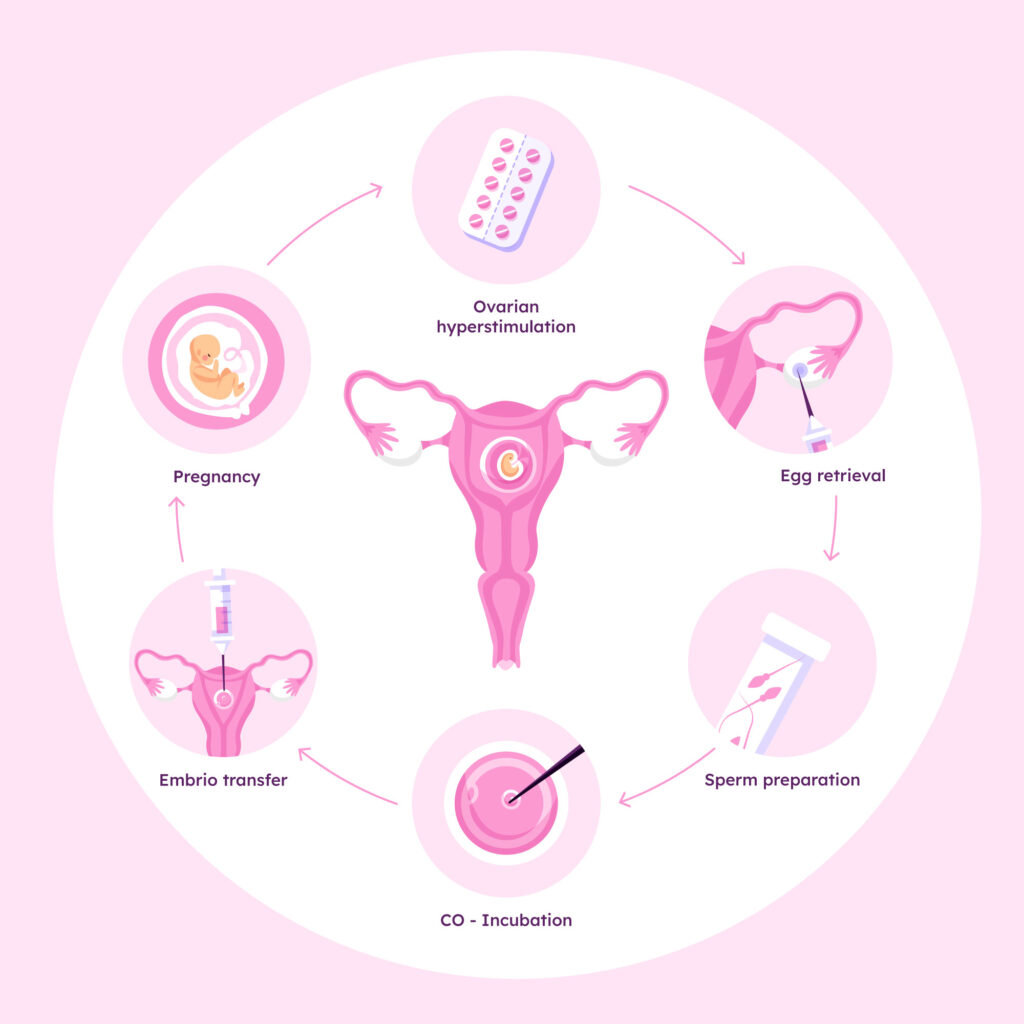Frozen Embryo Transfer (FET)

Frozen embryo transfer (FET) is a technique used during in vitro fertilization (IVF) treatment, where embryos that have been cryopreserved (frozen) are thawed and transferred into the woman’s uterus at a later date. Here’s an overview of the process of frozen embryo transfer:
Process of Frozen Embryo Transfer (FET):
Embryo Cryopreservation:
- Following the process of IVF, excess embryos that are not transferred during the fresh IVF cycle may be cryopreserved (frozen) for future use.
- Embryos are carefully prepared and frozen using a process called vitrification, which involves rapidly cooling the embryos to very low temperatures to prevent ice crystal formation and preserve their viability.
Thawing of Embryos:
- When the woman is ready for embryo transfer, the frozen embryos are thawed in the laboratory under controlled conditions.
- Embryologists monitor the thawing process closely to ensure the embryos survive and maintain their viability.
Endometrial Preparation:
- Prior to embryo transfer, the woman’s endometrium (uterine lining) is prepared to create an optimal environment for embryo implantation.
- This may involve hormone medication, such as estrogen and progesterone, to stimulate endometrial growth and synchronization with the embryo transfer schedule.
Embryo Transfer:
- Once the endometrium is deemed sufficiently prepared, one or more thawed embryos are transferred into the woman’s uterus using a thin catheter.
- The procedure is typically performed under ultrasound guidance to ensure accurate placement of the embryos in the uterine cavity.
Luteal Phase Support:
- Following embryo transfer, the woman may receive additional hormone medication, such as progesterone, to support the luteal phase of the menstrual cycle and promote embryo implantation.
Pregnancy Testing:
- Approximately 10 to 14 days after embryo transfer, the woman undergoes a pregnancy test to determine if implantation has occurred and whether she has achieved pregnancy.
Benefits of Frozen Embryo Transfer (FET):
Improved Pregnancy Rates: Studies have shown that frozen embryo transfer may result in higher pregnancy rates compared to fresh embryo transfer, possibly due to the ability to optimize the timing of embryo transfer and prepare the endometrium more effectively.
Reduced Risk of Ovarian Hyperstimulation Syndrome (OHSS): By avoiding the use of high doses of ovarian stimulation medications, frozen embryo transfer may reduce the risk of OHSS, a potentially serious complication of IVF treatment.
Flexibility in Timing: FET allows for greater flexibility in timing the embryo transfer, as it can be scheduled based on the woman’s menstrual cycle and other factors, optimizing the chances of successful implantation.
Considerations:
Timing and Synchronization: Achieving synchronization between endometrial preparation and embryo thawing is crucial for the success of FET and requires careful coordination and monitoring.
Cost: FET may incur additional costs compared to fresh embryo transfer, including the cost of cryopreservation and thawing of embryos.
Embryo Viability: Not all embryos survive the process of cryopreservation and thawing, and the success of FET depends on the quality and viability of the thawed embryos.
Frozen embryo transfer is a valuable technique in assisted reproductive technology, offering couples undergoing IVF treatment the option to optimize the timing of embryo transfer and improve their chances of achieving a successful pregnancy.
